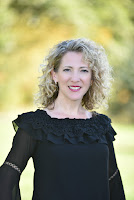Vocal Music
- Loving Shepherd of Thy Sheep – Philip Ledger
Instrumental Music
- Jubilate – Julie C. Stitt
- Rondo Jubilee – Brenda Austin
- Jesus, Meine Zuversicht – Anton Wilhelm Leupold (1867-1940)
Congregational Music (all hymns from The Hymnal 1982 with the exception of those marked “R” which are from Renew.)
- Hymn 366 - Holy God we praise thy Name (GROSSER GOTT)
- Hymn R139 - Halle, halle, Hallelujah (CARRIBEAN)
- Hymn 343 - Shepherd of souls, refresh and bless (ST. AGNES)
- Hymn 708 - Savior, like a shepherd lead us (SICILIAN MARINERS)
- Psalm 23 – setting by Hal H. Hopson
We feature music of two contemporary American female composers as our Handbell Choir plays this morning.
The first piece is a setting of a tune from the early 1800s called VESPER HYMN. It appeared in John A. Stevenson's Selection of Popular National Airs (1818) as a setting for "Hark! The Vesper Hymn Is Stealing." Some later hymnals attributed the tune to Dimitri Bortniansky, but no tune resembling this one has been found in that Russian composer's published works. Stevenson is generally recognized as being the arranger if not also the composer. In this arrangement, you will hear the melody not only in the top line of the bells, but sometimes in the middle of the bell choir, while the upper bells sound like a music box, and the lower bells are played with mallets.
This arrangement is by Julie Stitt, who is a middle school teacher in the northern Minneapolis Metro area. She is also the director of Handbells at at Our Saviour's Lutheran Church in Minneapolis.
Stitt grew up in San Bernardino, CA where she began ringing handbells at an early age at First United Presbyterian Church. After completing a Master’s Degree from the University of Minnesota, she began composing and arranging handbells. . She has published handbell pieces in print with several publishing companies. Several pieces have been performed at area festivals around the United States. Her original composition, La Paix, was performed at the Loire Valley Handbell Festival in France in 2004 by Twin Cities Bronze.
The communion voluntary is Rondo Jubilee. A rondo is a musical form that can be thought of as an extension of Binary and Ternary form. Binary form is AB and Ternary form is ABA, and a rondo takes this a step farther by adding other letters – it goes ABACADAEA.
 |
| Brenda Austin |
It is written by Brenda E. Austin, the Artistic Director for the Detroit Handbell Ensemble and Director of Worship and Music at First United Methodist Church in Eaton Rapids, MI, She is Handbell Editor for Agape, a major publishing company for church music.
She graduated with degrees in Vocal Performance from Western Michigan University and a Master of Music in Choral Conducting from the University of Missouri – Kansas City.
She graduated with degrees in Vocal Performance from Western Michigan University and a Master of Music in Choral Conducting from the University of Missouri – Kansas City.
The closing voluntary is a setting of the German Chorale JESUS, MEINE ZUVERSICHT, which is used in our hymnal for the communion hymn "Let thy blood in mercy poured" (hymn 313), but in many churches is also used for the hymn "Jesus lives! Thy terrors now can no longer, death, appall us". (That text is also in our hymnal, but with different tunes.)
 |
| A. W. Leupold |
Anton Wilhelm Leupold was the organist at the St. Petri Church in Berlin for almost forty years. He composed motets, sacred and secular songs, chamber music and organ works of all kinds. Leupold left around 200 organ preludes to almost all the melodies in the hymn book. His son Ulrich Leupold (1909-1970) was also a composer and was the editor of his father's music.
No comments:
Post a Comment
Note: Only a member of this blog may post a comment.